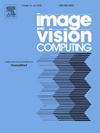Enhancing few-shot object detection through pseudo-label mining
IF 4.2
3区 计算机科学
Q2 COMPUTER SCIENCE, ARTIFICIAL INTELLIGENCE
引用次数: 0
Abstract
Few-shot object detection involves adapting an existing detector to a set of unseen categories with few annotated examples. This data limitation makes these methods to underperform those trained on large labeled datasets. In many scenarios, there is a high amount of unlabeled data that is never exploited. Thus, we propose to exPAND the initial novel set by mining pseudo-labels. From a raw set of detections, xPAND obtains reliable pseudo-labels suitable for training any detector. To this end, we propose two new modules: Class and Box confirmation. Class Confirmation aims to remove misclassified pseudo-labels by comparing candidates with expected class prototypes. Box Confirmation estimates IoU to discard inadequately framed objects. Experimental results demonstrate that xPAND enhances the performance of multiple detectors up to +5.9 nAP and +16.4 nAP50 points for MS-COCO and PASCAL VOC, respectively, establishing a new state of the art. Code: https://github.com/PAGF188/xPAND.
求助全文
约1分钟内获得全文
求助全文
来源期刊

Image and Vision Computing
工程技术-工程:电子与电气
CiteScore
8.50
自引率
8.50%
发文量
143
审稿时长
7.8 months
期刊介绍:
Image and Vision Computing has as a primary aim the provision of an effective medium of interchange for the results of high quality theoretical and applied research fundamental to all aspects of image interpretation and computer vision. The journal publishes work that proposes new image interpretation and computer vision methodology or addresses the application of such methods to real world scenes. It seeks to strengthen a deeper understanding in the discipline by encouraging the quantitative comparison and performance evaluation of the proposed methodology. The coverage includes: image interpretation, scene modelling, object recognition and tracking, shape analysis, monitoring and surveillance, active vision and robotic systems, SLAM, biologically-inspired computer vision, motion analysis, stereo vision, document image understanding, character and handwritten text recognition, face and gesture recognition, biometrics, vision-based human-computer interaction, human activity and behavior understanding, data fusion from multiple sensor inputs, image databases.
 求助内容:
求助内容: 应助结果提醒方式:
应助结果提醒方式:


